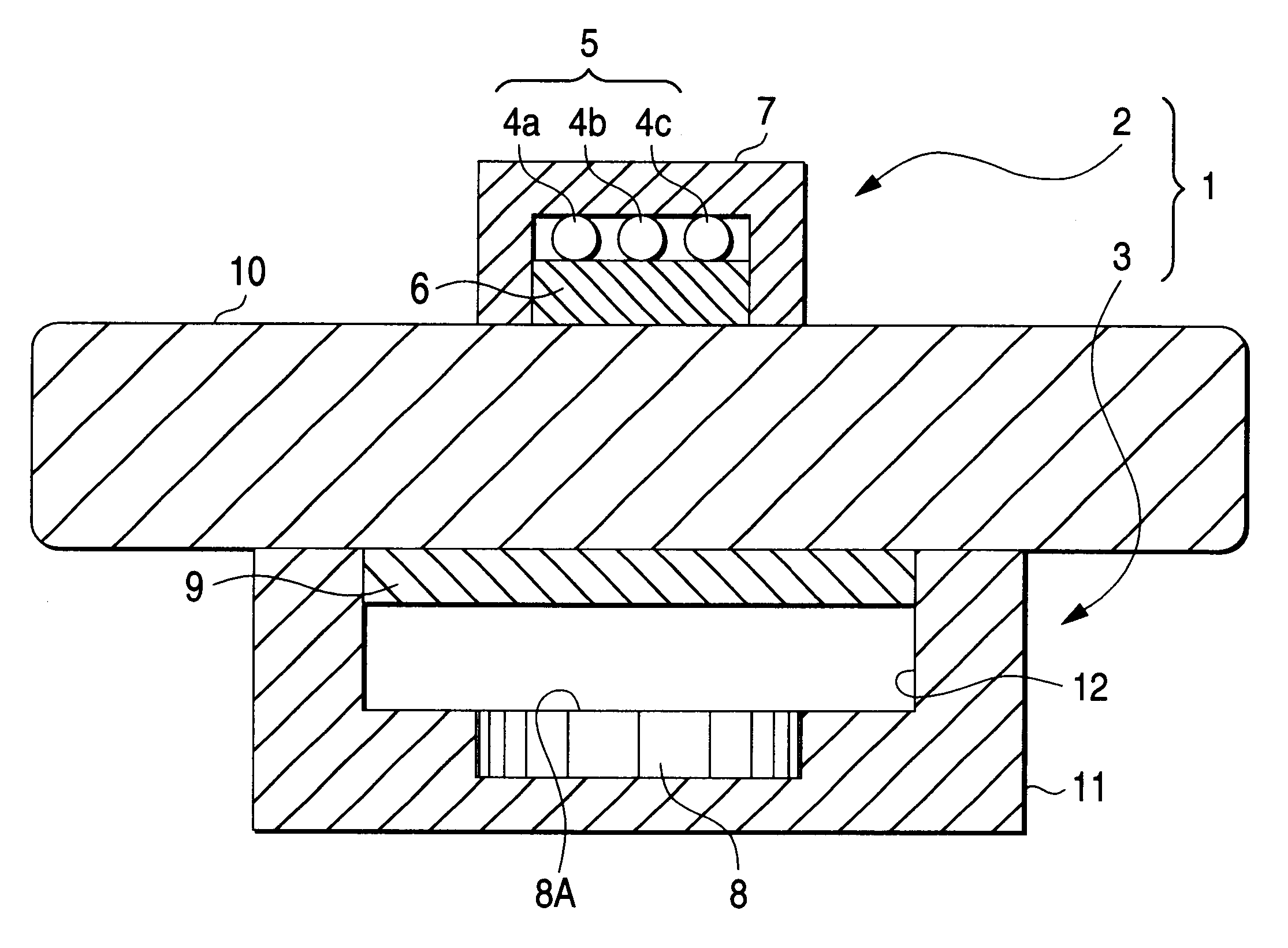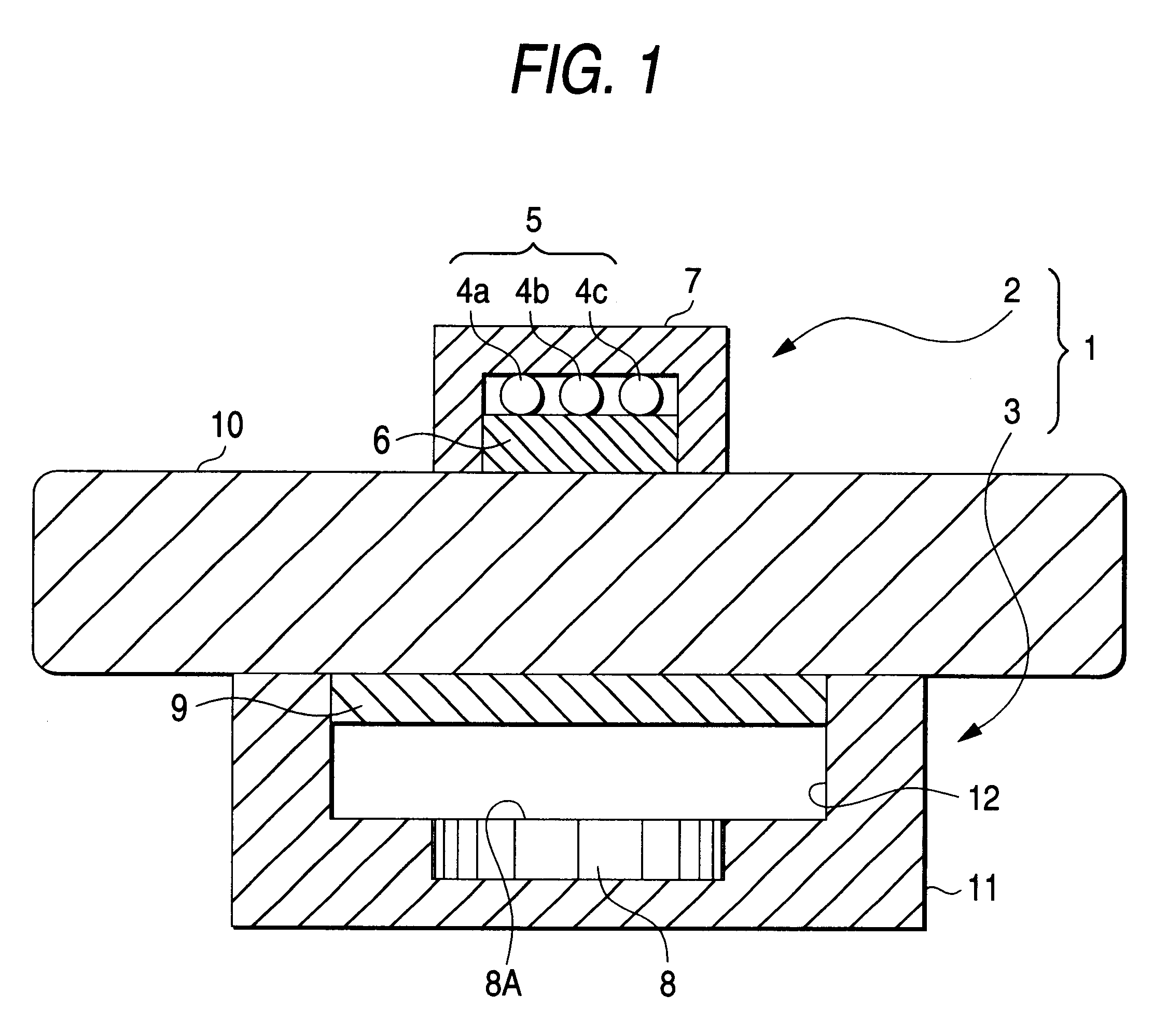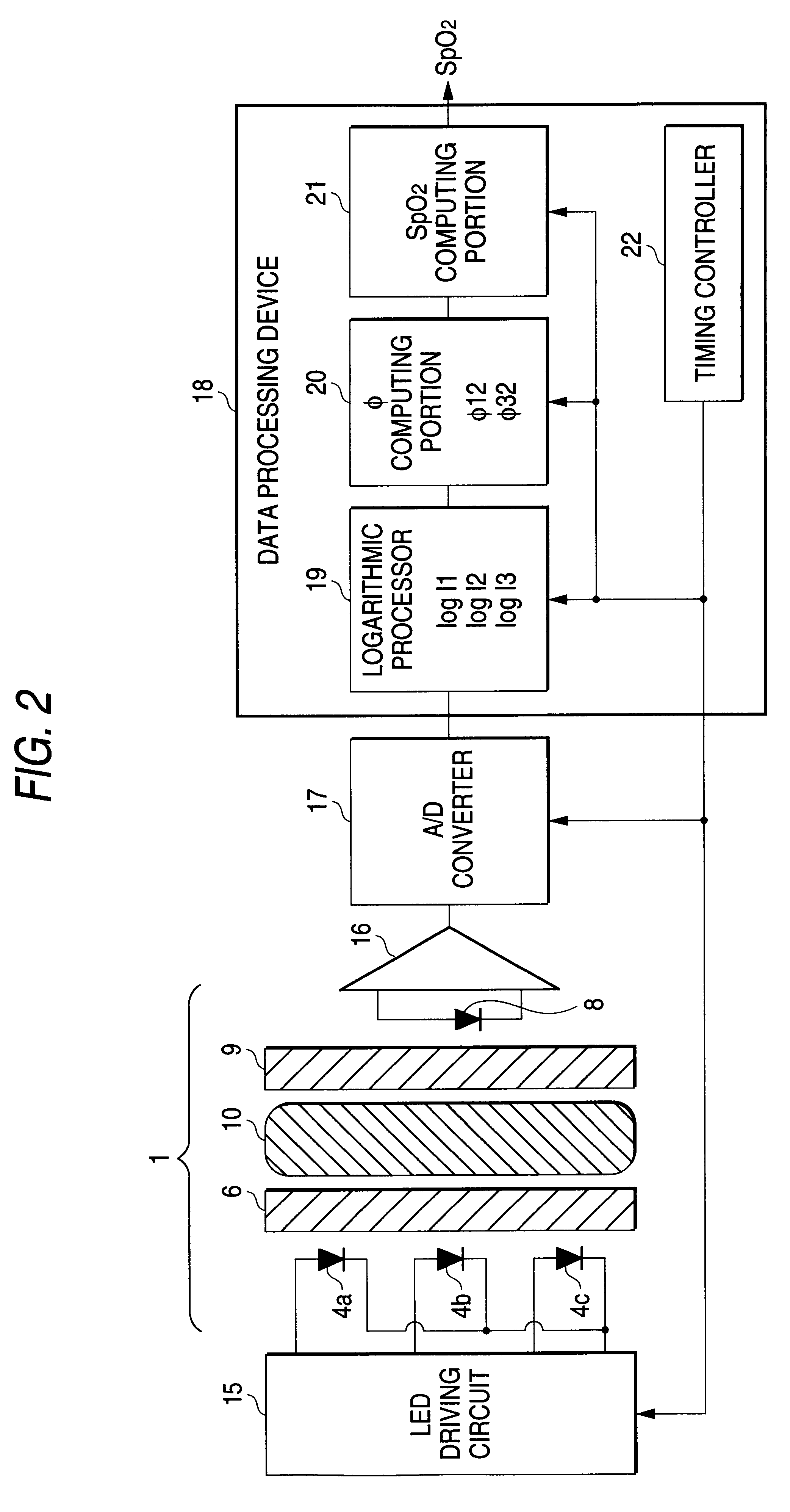Probe and apparatus for determining concentration of light-absorbing materials in living tissue
a technology of living tissue and light-absorbing materials, which is applied in the direction of medical science, diagnostics, and diagnostics using light, can solve the problems of insufficient measurement accuracy of present pulse oximeter, inability to measure at the present stage, and inability to correctly carry out the measurement in question by increasing the number of wavelengths of lights, etc., to achieve the effect of increasing the absorbing attenuation
- Summary
- Abstract
- Description
- Claims
- Application Information
AI Technical Summary
Benefits of technology
Problems solved by technology
Method used
Image
Examples
first embodiment
A pulse oximeter using three wavelengths will be described as a first embodiment of the present invention. A conventional pulse oximeter is of the 2-wavelength type. The pulse oximeter of the 3-wavelength type is improved over the 2-wavelength pulse oximeter in the performance.
The principle of the 3-wavelength pulse oximeter will first be described. One of the major causes of an error in the conventional pulse oximeter is a pulsation other than a pulsation of the arterial blood. This is the non-absorbing attenuation .DELTA.As and varies due to a mounting state of the probe and others. This is also a large component of the artifact caused by a body movement. To lessen the influence by .DELTA.As, light emitted from a light source is scattered by a scattering portion and then irradiated onto living tissue as an object under measurement, and light received from the living tissue is passed through the scattering portion and then applied to a light sensitive surface of a photo-electric tr...
PUM
 Login to View More
Login to View More Abstract
Description
Claims
Application Information
 Login to View More
Login to View More - R&D
- Intellectual Property
- Life Sciences
- Materials
- Tech Scout
- Unparalleled Data Quality
- Higher Quality Content
- 60% Fewer Hallucinations
Browse by: Latest US Patents, China's latest patents, Technical Efficacy Thesaurus, Application Domain, Technology Topic, Popular Technical Reports.
© 2025 PatSnap. All rights reserved.Legal|Privacy policy|Modern Slavery Act Transparency Statement|Sitemap|About US| Contact US: help@patsnap.com



